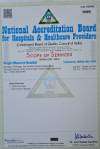
One of the most common illnesses that a child can develop is an ear infection. However, while they are more common in children, adults can still develop them – and when this happens, they can be more serious. In adults, ear infections must be monitored closely and diagnosed by an ENT doctor early to avoid complications as a result. Some situations can put an adult more at risk for ear infections, but prevention and treatment are both options to prevent an ear infection from becoming a common complication in your life.
Symptoms of ear infection
Recognizing the signs that an ear infection is developing may be difficult for you, but if they become a recurring theme in life, you may start to recognize it later on. The ear is one of the most intricate and complicated parts of the body. The structure is delicate, and there are several chambers to consider, and an ear infection can develop in any of the inner, middle and outer ear chambers. The most common place to develop a disease is the middle ear, but the outer ear is also affected sometimes.
Inner ear infection
When an inner ear infection occurs, this is usually a sign of something going on elsewhere in the body. Some of the symptoms of an inner ear infection that are common include:
- Hearing loss
- Nausea
- Balance issues
- Inflammation
- Tenderness
- Headache
- Swelling
- Fever
Middle ear
The eardrum is located just in front of the middle ear, and the infections usually begin when viruses or other bacteria that affect the eyes, mouth and nose get trapped here. The feeling of clogged ears is the result of this bacteria, and those who have a middle ear infection have trouble with their hearing with a fluid buildup in the back behind the drum. With fluid accumulations, the pressure pushes on the eardrum and fluid can drain from the ear itself.
Outer ear infections
Sometimes, an outer ear infection can begin with a rash on the outside of the ear. This rash is itchy, and as the external ear canal is a balanced breeding ground for germs to build, outer ear infections can occur. Injuries to the ear or irritation can cause outer ear infections, and the most common symptoms are swelling, pain, tenderness and red skin.
When to see an ENT doctor?
You should see an ENT doctor if three days have passed without improvement in your symptoms, and you should be seen straight away if you start to lose your balance.
Ear infection diagnosis
Being diagnosed with an ear infection can be a relief; you’ve dealt with pain for a while now, so it’s time to get your diagnosis and subsequent treatment. Your ENT doctor will need to talk you through your medical history, any issues leading up to your pain beginning and they’ll talk to you about any medication that you may be taking. Mostly, an ENT doctor will use an otoscope to view your eardrum and ear canal. This will allow them to see signs of infection and sometimes, a small blast of air is released into your ear to see how the eardrum reacts. This observation can help your ENT doctor to diagnose your ear infection.
Treating your ear infection
There are some cases where an ear infection won’t need any treatment at all, and after a time, it will clear up on its own. Symptoms can be managed with rest, fluids and the occasional pain killer, but it’s important not to try and guess what treatment you need. An ENT doctor can prescribe antibiotics to knock out an infection that’s causing you pain and fever, and most ear infections can be managed with over the counter medications. Your ENT doctor will go through the home care methods you can use, including ear drops and warm compresses.



